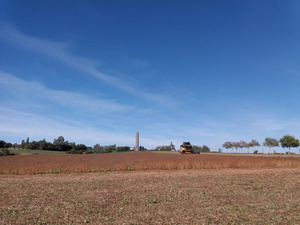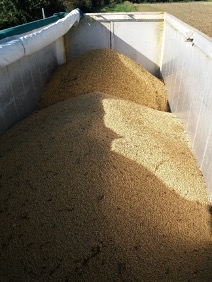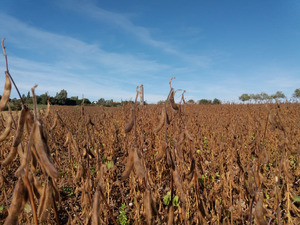Soybean cultivation in Flanders (Belgium)
The farmer has an arable farm with approximately 40 hectares (ha). The crops he cultivates on this area are potatoes (8ha), wheat (8ha), corn (8ha), green peas (8ha), barley (4ha) and soybeans (4ha). In 2014 he received his first batch of soybean seeds which initiated the introduction of soybean in his crop rotation.
Between 2012 and 2014, there was a growing demand for soybeans in Flanders. Introduction of soybean in the crop rotation has advantages for the soil and delivers nitrogen to the subsequent crops. The farmer has no animals on his farm so the products he grows are either sold for human consumption or to other farmers as fodder. Compared to maize for example, soybean is harvested a little earlier and, unlike maize, does not need to be dried afterwards. Therefore, soybean is less expensive than maize. Because soybean is a leguminous crop, it fixes its own nitrogen meaning the farmer can save on fertilizer. This is advantageous for the farmer due to the lack of manure on his farm. From the farmer’s point of view, soybean is a less difficult crop than maize and has several additional advantages (soil and costs).



Problem encountered
The main problem he encountered was weed control due to the necessary control methods not being authorised initially for use on soybeans. In the first year in particular, there was a high weed occurrence. The farmer did not obtain a clean yield of soybean, which resulted in a high level of weed contamination from seeds. Nowadays, with more experience (e.g. adapted sowing distance) and more authorized herbicides, it is more viable. There were also no adapted varieties of soybean available in the first years, so cultivation and yield were not optimal.
Another problem is the lack of knowledge of diseases in soybeans in the region, such as damage by the bean fly as a result of a cruciferous cover crop, Raphanus sativus, which acts as a host plant for the larvae of the bean fly. This insect feeds on the sowed soybean seeds with no occurrence of soybeans as a consequence.
Additionally, because headers were not adapted to soybean harvesting, the lowest beans were lost. After harvest there are still some uncertainties about the use of and market for the soybeans. Due to the quality not being good enough for human consumption, the soybeans are currently only used for feed.
Solutions implemented
There was no specific sowing machine available in the region, nor knowledge about cultivation methods, such as row distance. The farmer opted for a lower distance (12cm) using a pea seeder so that he could ensure quick soil cover. With a lower row distance, he has the advantage of suppressing the weeds. In addition, there was little knowledge about soybean varieties and there were no local varieties available. During last year’s harvest, the farmer used an adapted header specifically for the harvest of soybeans. This header can follow the relief of the soil so that nearly all pods are harvested, even those lowest on the stem. While initially the yield was not very high, nowadays the famer obtains approximately 3.5 ton/ha, which is above average for the region. The savings on fertilizers is also a great advantage.
Challenges encountered
For the marketing of the beans, only one company controls the offset for human consumption. This is a struggle, because there is also only one company in Belgium that is able to take in the beans on a high enough scale for human consumption. Also, the margins of soybeans as feed are lower than for food. Recently the farmer has also been in contact with other companies that take in soybeans for human consumption. As an alternative, he has also tried to harvest green soybeans (Edamame) according to methods used in China. The focus will continue to be on production for human consumption rather than for feed.
Why was this project successful?
All the information and experience gained was collected and shared by the research institutes and used to advise other farmers with an interest in soybean cultivation. Media and press also showed an interest. In addition, there was a good understanding and collaboration with Inagro thanks to effective communication and follow up.
 tap and then scroll down to the Add to Home Screen command.
tap and then scroll down to the Add to Home Screen command.